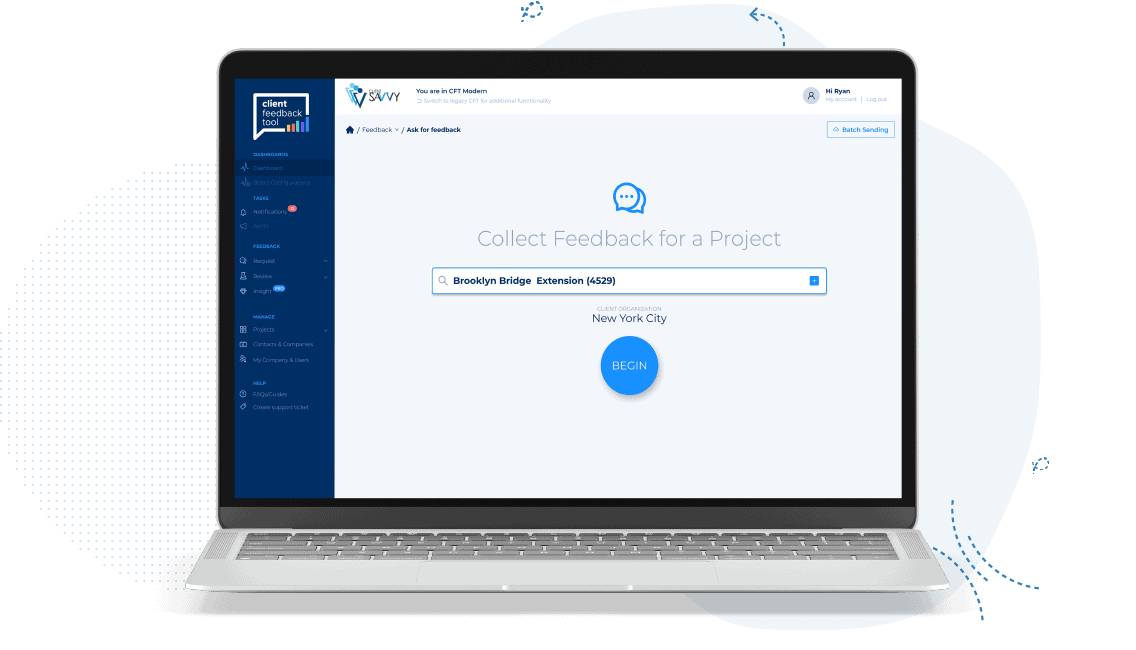When we talk to professional services firms, we hear fear and concern from client-facing professionals about the feedback process. All too often, many firms are taking client feedback personally. Often afraid to pursue the practice at all due to fears of needing to change a process, or learning a client doesn't think too highly of them.
These fears are common but unfounded. If a client is dissatisfied with the service or deliverables they are receiving, they won’t be a client for too much longer. And, if a client takes the time to give feedback, they’re providing you with an opportunity to address their concerns. Wouldn’t you like to know if your client has concerns so you can do something to keep them around?
Contrary to popular belief, Client Feedback is more about the client than the project . Customer feedback always tells a firm more about the client than they will ever know about themselves, especially when it comes to service delivery.

If a client gives you a 3.5, 0.5 below “met expectations,” don’t get defensive, be inquisitive. Ask yourself, or the project manager, “Why did they give us a 3.5?” Be proactive, not reactive.
Proactively reach out to the client to inquire about why they gave you a 3.5. What were their expectations? How did we fail to meet those expectations? What can we do to better align moving forward?
Consistently Unique
Consider all the service professionals in your firm. While they are all delivering services to your clients, each of your clients is receiving a unique experience with different perceptions about the experience they are receiving from your team.
While you strive to deliver a consistent client experience, it is logically impossible to do so. There are too many variables both on your side and on the client side. Each client evaluates their experience with their own perceptions, interpretations, and scores based on where they are, what they already know, and how they learn.
And for you and your company, it’s not about knowing that you received a client feedback score of 3.7 or an NPS (Net Promotor Score) of 9, it’s about knowing why each client gave the score they gave.
A 3.7 or a 9 doesn’t necessarily enable you to take any real action. Nevertheless, talking to a handful of clients about their experience is informative. What did they love? What did they loathe? Why?
This information enables you to empathize with distinct types of clients. It gives you the momentum to engage in a conversation with those who shared their thoughts on what's going well, and what isn't.
An Example
We had one client who received a 3.9 rating, 0.1 below “met expectations,” from his best friend. He didn’t think anything was wrong, but we suggested he follow up with his friend nonetheless. Our client learned his best friend had just taken over as head of the school board and was overseeing the construction of a new school. His friend did not know how to read blueprints and was afraid to say anything – even to his best friend.
The two got together at the construction site and went through the blueprints and the site. They were able to make a few changes to improve the facility without impacting the budget. It was a “win-win” for both parties and our client helped his friend overcome an uncomfortable situation.
Your clients want to talk to you. They want to work with you to improve their projects because you’re the one that can help them look good to their bosses, colleagues, and shareholders.
Give your client as many opportunities as necessary to give you feedback over the course of your project or relationship.
You may be interested in reading How To Develop Empathy for Clients.
If you’d like to learn how to do this, we can help.





